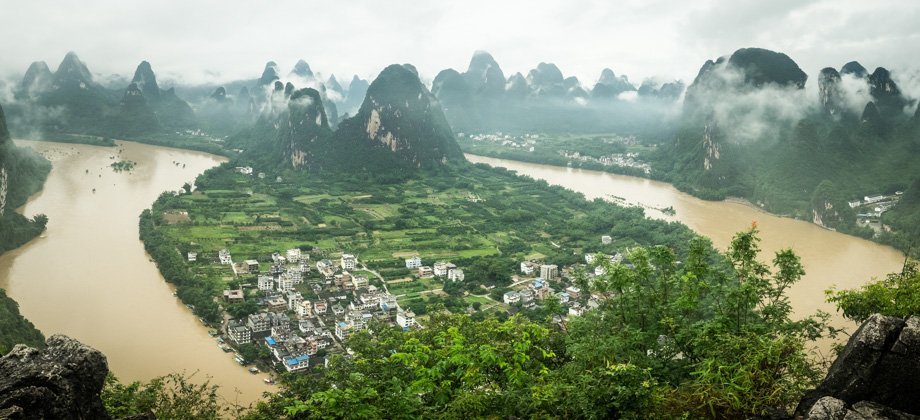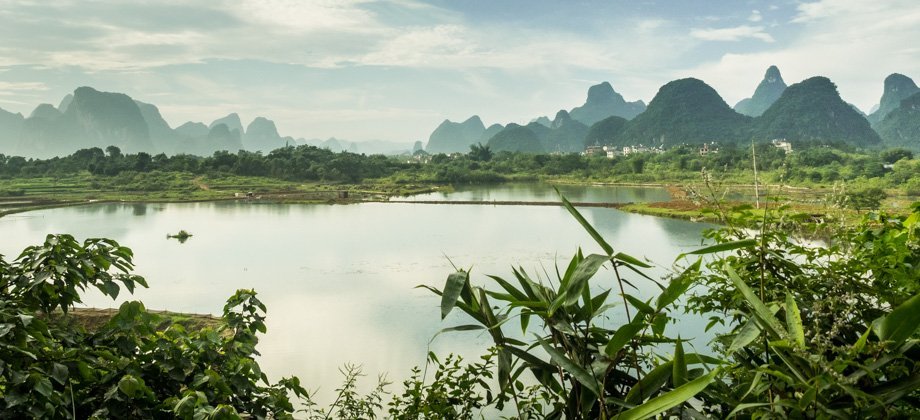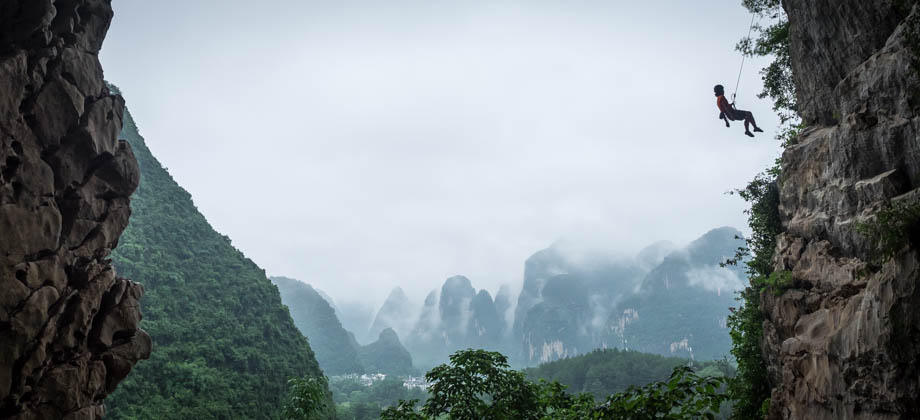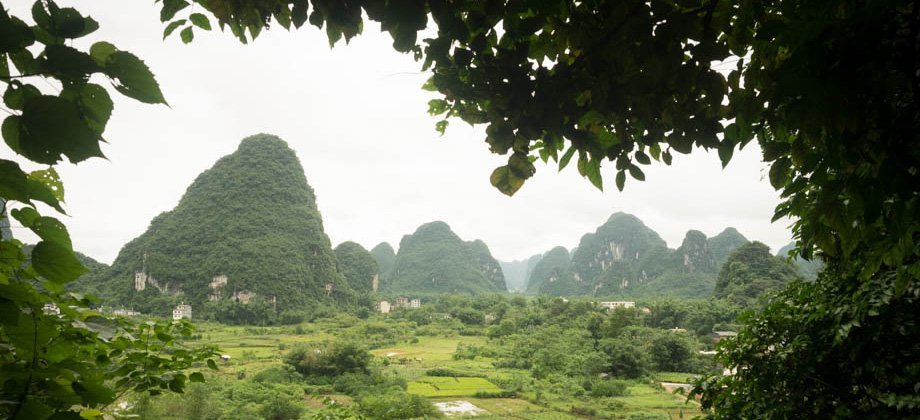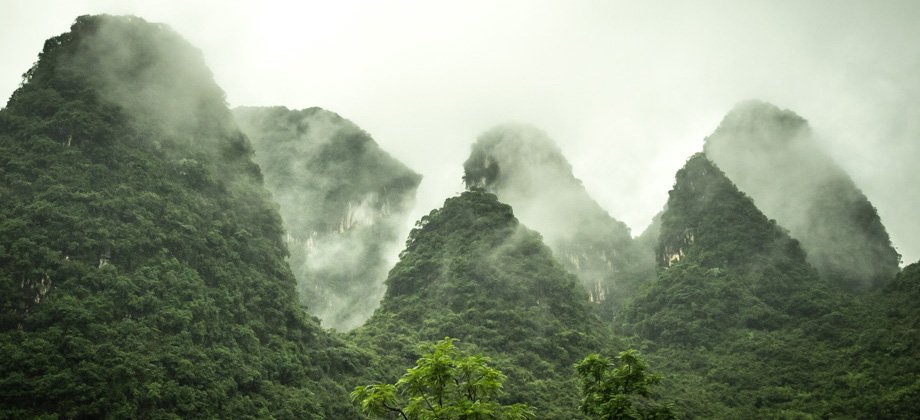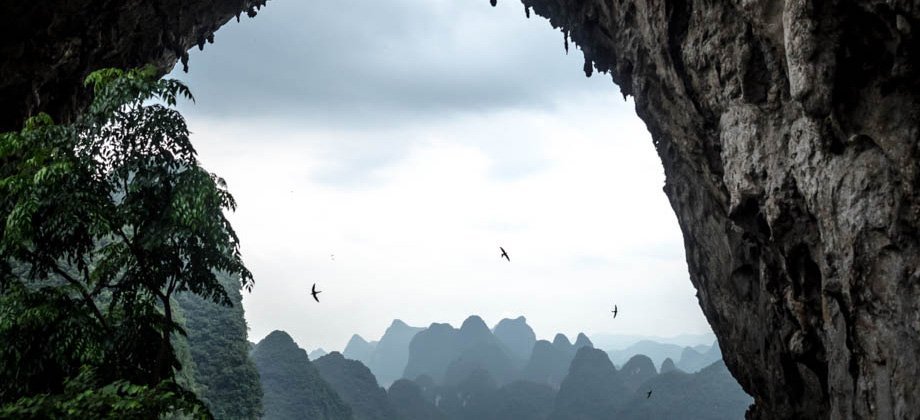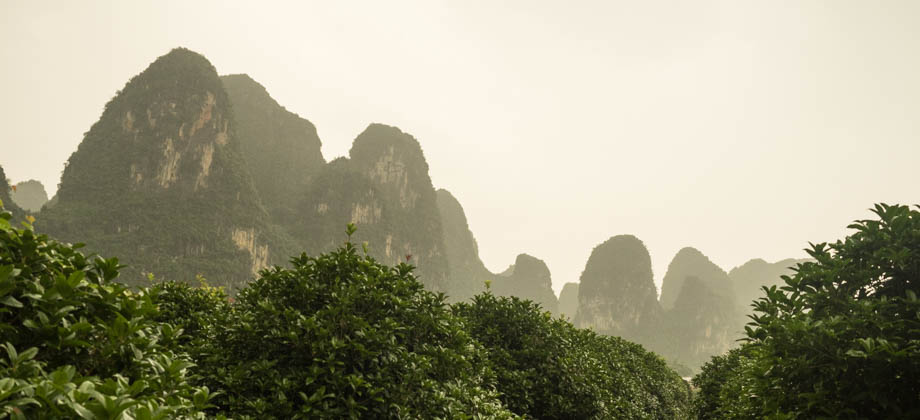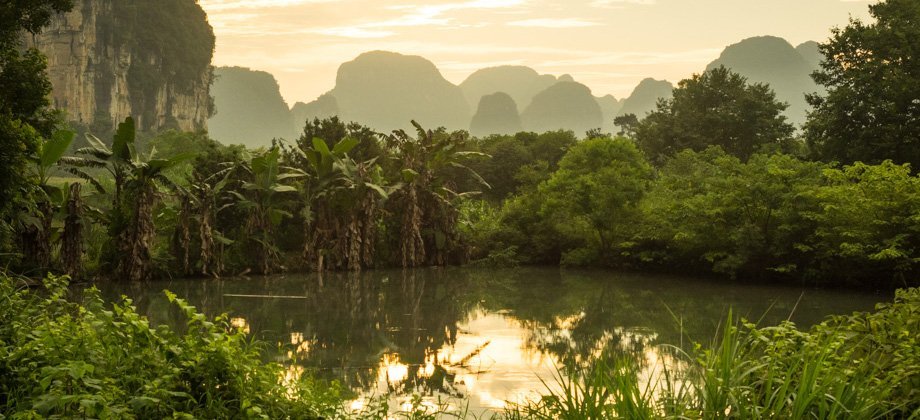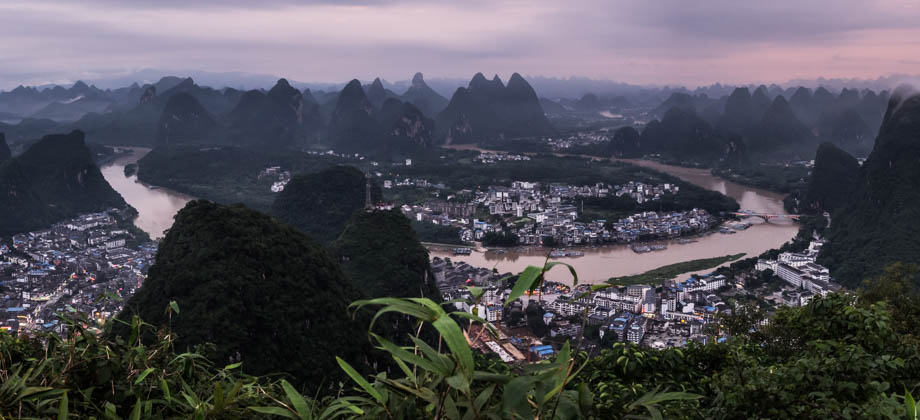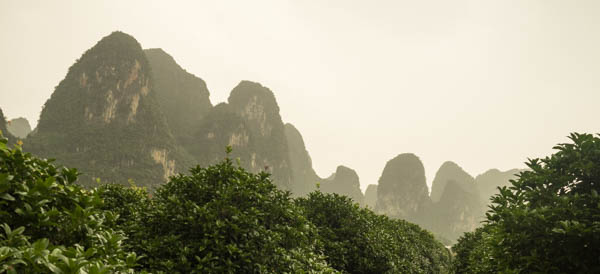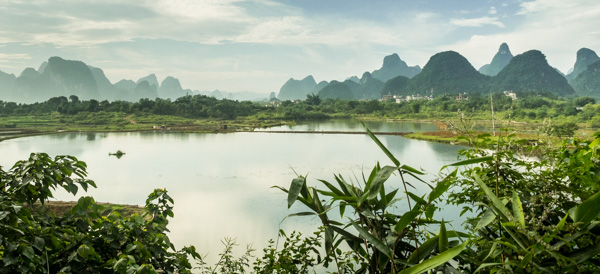June 16, 2016
Posted by Ramon Fadli in Broadleaf Rainforests, Budget, China, Forests, Guangxi, Hiking, Humid Subtropical, Karsts
Yangshuo Day 06 – Xingping
Yangshuo - Day 01 & 02 : Treasure Cave
Yangshuo - Day 03 : Pantao Hill
Yangshuo - Day 04 : Chicken Cave
Xingping
The plan that day was to hike for 16 km from the town of Xingping (Mandarin : 兴平市) to Shuiyantou, which was just across the river from the town of Yangdi. The hike was to be along roads that flanked the scenic Li River for almost the entire way, and involved two river crossings--the first crossing over from the east bank of the river to Lengshui, and the second from Quanjiazhou and back over to the east bank of the river once again. The area around Xingping, aside from the karst peaks beyond the banks of the river, was relatively flat so we were to expect very minimal elevation gain. I had also mentally divided the hike into those three parts (Xingping to Lengshui, Lengshui to Quanjiazhou, and Quanjiazhou to Shuiyantou), but before we even began, we had to first get to the town that is probably most known for the view on the back of the CNY20 note--Xingping.
Getting There
Buses depart from Yangshuo's southern bus station fairly frequently, every 15 minutes or so. The journey takes only 45 minutes so you do not need to purchase tickets beforehand, just pay the CNY10 when you board the bus. Buses depart from Yangshuo from 06:00 to 19:30, and from Xingping till 18:30. But if you are going on a day trip to Xingping, I would recommend getting the 18:00 bus back to Yangshuo at the latest. Just in case.
 Xingping is actually quite well-known for their fisherfolk who can still occasionally be found using great cormorants (Phalacrocorax carbo) to catch fish. The way they do this is by first attaching a snare around the bird's neck before releasing it onto the river. The restriction on the neck prevents the cormorant from swallowing larger fish, and the fish is instead removed from its mouth. Cormorant fishing along the Li River is basically for demonstration purposes for tourists though, as fishing has been restricted on the river due to conservation reasons. Not only are the number of fish in decline due to the activities of humans, but the number of cormorants were once in decline too. Not too long ago, the birds were seen as a competitor for fishing and humans ended up hunting it nearly to extinction. Fortunately, the numbers have rebounded since, thanks to conservation efforts. Welcome to the Anthropocene!
Xingping is actually quite well-known for their fisherfolk who can still occasionally be found using great cormorants (Phalacrocorax carbo) to catch fish. The way they do this is by first attaching a snare around the bird's neck before releasing it onto the river. The restriction on the neck prevents the cormorant from swallowing larger fish, and the fish is instead removed from its mouth. Cormorant fishing along the Li River is basically for demonstration purposes for tourists though, as fishing has been restricted on the river due to conservation reasons. Not only are the number of fish in decline due to the activities of humans, but the number of cormorants were once in decline too. Not too long ago, the birds were seen as a competitor for fishing and humans ended up hunting it nearly to extinction. Fortunately, the numbers have rebounded since, thanks to conservation efforts. Welcome to the Anthropocene!
The ¥20 View
After successfully dodging all the people at the bus stop who looked like they could possibly have been touts, we began by making our way towards the old bamboo-lined bridge


